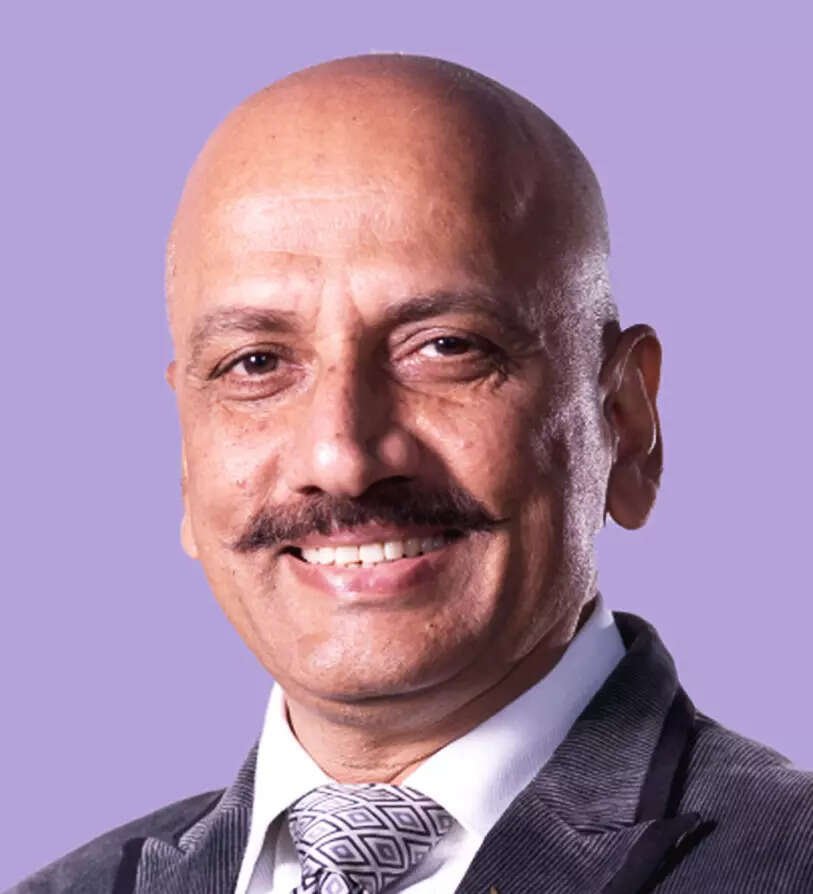

Dr Rajeev Kumar Mehajan
A shifting world order
Nations no longer compete only in markets—they now compete in laboratories. The global landscape is shifting fast, and research can no longer remain an isolated academic pursuit—it has become the frontline of national strength. Trade frictions, fragile borders, ongoing wars, youth unrest, shaky supply chains, and fierce technological rivalries are redrawing the world order—rather there seems world disorder—no permanent friends—not even dependable partners. This means self-dependence for India too—calling for innovation to build and grow.
India looks impressive on paper—Our universities produce millions of graduates every year, research papers pour out in large numbers, and a few centres of excellence stand tall. But the reality bites: patents are rare, commercialization is weak, and our dependence on imported semiconductors, medical equipment, and defense technologies chips away at our sovereignty.
Even the country’s leadership echoes this urgency. In his recent address to the nation, Prime Minister Modi underlined three pillars—political reform through GST, a moral call to buy local, and a nationalistic thrust for self-reliance under Atmanirbhar Bharat. India is not an outlier in this regard; other nations are equally vocal about protecting their own innovation pipelines.
The current research landscape: Progress and priority
During last one decade plus, the government has launched several major initiatives, including the National S&T and Innovation Policy, National Education Policy 2020, Vigyan Dhara 2024, the Anusandhan National Research Foundation, Technology Missions, Youth-focused Research Fellowships, Women-inclusive Schemes, and numerous programs stemming from these efforts. More recently, a set of policy reforms were announced by the Union Minister S&T in June 2025 to enhance the “Ease of Innovation” and “Ease of Doing Research. These reforms are expected to be aligned with the National Education Policy 2020.
The reality check
Yet, before India can realize such ambitions, it must first confront the structural and systemic major challenges that hinder its innovation ecosystem—low R&D investment, modest Corporate R&D and minimal philanthropy—leaving infrastructure underdeveloped limiting the quality, scale and influence of research.
To be candid, India’s research ecosystem is often constrained by science administrators’ attitude, invisible bureaucratic barriers, divergence among the line ministries and S&T Departments, policy instability and reactivity. Other emerging challenges include weak linkages between government, academia, and industry; gaps in IPR laws; poor alignment between tech and trade; and a low density of scientists.
In short, despite numerous policy interventions at multiple levels, India’s R&D continues to operate in silos, remains fragmented, lacks true convergence among even S&T departments.
The consequences of inertia
India ranks fourth globally in the number of research publications, yet metrics like H-index show that high volume has not translated into significant global impact. Though, fields like data science and advanced computing have thrived due their limited dependence on infrastructure.
Although NEP 2020 encourages internationalization, it remains in its early stages, benefiting mainly the top-tier institutions through cross-border collaborations. Universities continue to function in isolation – oblivious of industrial needs. Motivating faculty and students to engage in academic research in India remains a giant issue.
On the other hand, our global peers are upbeat. China, once reliant on foreign expertise, now invests over $250 billion annually in research. Smaller nations like Singapore, Israel, and South Korea link start-ups, universities, and industry to turn challenges into opportunity.
If the status quo continues, opportunities in quantum computing, green energy, and advanced manufacturing may slip away. The much-hoped-for “reverse brain drain” could turn into “brain waste,” trapping returnees in outdated systems. In a world where technological strength defines power, failure to innovate risks irrelevance.
The nine pillars of reforms
This is not yet another wish list. These are systemic, structural, and inescapable:
1. Transformative Foresight: Shift from short-term political metrics to a long-term national vision. Unify S&T ministries under framework to accelerate and scale emerging technologies.
2. Innovation Sovereignty: Focus on homegrown design, and IP, while breaking silos between academia and industry—fostering collaborations, open exchange, and creative freedom.
3. Research Culture: Build a culture of ownership that values evidence, clarity, and critical inquiry—where individuals and institutions pursue truth collectively, yet competitively.
4. Translational Focus: Bridge discovery and application by linking research in university laboratories with start-ups, incubators, and enterprises—turn ideas into real-world solutions.
5. Rebuilding Educational Hubs: Transform institutions into globally credible centres by addressing gaps in policy, leadership, diversity, competency, motivation, and visibility.
6. Quality over Quantity: Adopt the 5P Model—Partnerships, Projects, Publications, Patents, and Products—with quality research funding proposals as catalysts.
7. Data Democracy: A national open-access platform for funded research—data, code, and results—to cut duplication, democratize innovation—empowering MSMEs and start-ups.
8. Decentralized Ecosystems: Develop regional innovation hubs beyond metro, and promote state-level missions to spread talent and innovation across rural and semi-urban India.
9. Work Ethics: Champion risk-taking and merit over conformity. Empower youth by breaking hierarchies and rejecting the 3Ms: Misalignment, Micromanagement, and Mediocrity.
The call to action
India stands at a defining crossroads. Reform must break free from glossy policy papers and slogans—it must become shared ownership across government, academia, industry, and society, driven by bold deregulation. Our research ecosystem demands structural transformation. Without it, Vision 2035 risks becoming a mirage. We must fortify our foundations, reclaim lost talent, and uplift those who stayed.
To scholars and professionals: don’t wait—lead. Collaborate, mentor, and bring global opportunities back home. Make breakthrough research—a soldier like national duty. India has the talent—it needs translation, trust, and trigger. This is our moment. Let’s seize it. Jai Hind!
Dr Rajeev Kumar Mehajan is a global education thought leader and the Hon’ble President’s (Visitor’s Nominee) at IIT Kharagpur. He also serves as a UPSC panel member on the Selection Committee for IAS and Allied Services. He is an IAF veteran and also the Founder, NobleGenics Trust.
DISCLAIMER: The views expressed are solely of the author and ETEDUCATION does not necessarily subscribe to it. ETEDUCATION will not be responsible for any damage caused to any person or organisation directly or indirectly.








